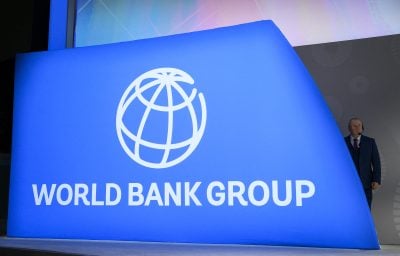The role of the financial services sector in Vision 2030 is pivotal. It is expected to increase savings and mobilise investment funds to implement the projects that are designed to accelerate growth.
Kenya has a well-organised and generally smoothly functioning financial sector comprising banking, insurance, capital markets and pension funds. Important components of the sector are the quasi-banking institutions and services provided by savings and credit cooperatives (SACCOS), microfinance services, building societies, development finance institutions (DFIs) and informal financial services.
At present, the financial sector in Kenya, as in much of Africa, is characterised by low penetration and limited supply of long-term finance. However, the exponential growth of mobile money transfers as offered by M-Pesa, Zap and Yu as well as the extraordinary growth of Equity Bank, which concentrates on providing services to smallholders, is a clear indication that the potential for mobilising savings in Kenya has hardly been tapped.
In October, Equity Bank’s CEO, James Mwangi, won the annual 2011 African Banker Award as Best Banker for the second time in succession.
Robust banking sector
As at 30 June last year, the Kenyan banking sector comprised 43 commercial banks, one mortgage finance company, and 127 foreign exchange bureaus. Branch networks increased from 930 in June 2009 to 1,017 in June 2010, representing a growth of 9.4%. According to the Central Bank of Kenya, the banking sector maintained high capital and liquidity ratios in relation to the minimum statutory requirements. Non-performing loans were low in relation to gross loans. Liquidity was considered strong, with the average ratio of liquid assets to total deposit liabilities at 45.1%, well above the statutory minimum requirement of 20%.
The consolidated position for all commercial banks and non-bank financial institutions showed a 41.9% increase in profitability in the year to June 2010 while credit risk declined with non-performing loans down by 7.9%. The ratio of gross non-performing loans to total loans improved. Total assets of the banking sector rose by 22.6% from Ksh1,263.4bn in June 2009 to Ksh1,548.4bn at June 2010.
Capital markets
A robust capital market environment will be essential to the type of long-term investments that Vision 2030 calls for in order to finance large infrastructure projects.
The overriding objective is to raise savings and investment rates to 25-30% of GDP. To achieve this, the role of the country’s Capital Market Authority (CMA) will be to facilitate raising stock market capitalisation from 50% to 90% of GDP by 2012 and bond capitalisation as a share of GDP from 16% to 30% by 2012.
CMA is working to increase access to capital market products and services as well as widening outreach across the various regions of the country. The Authority is also supporting the development of Collective Investment Schemes as convenient investment vehicles for the retail investors.
CMA has introduced venture capital and asset backed securities regulations and the range of tradable securities was expanded through IPOs, rights issues, and treasury and corporate bond listings. The Authority also developed a policy framework for OTC (over-the-counter) bond trading and is in the process of implementing it.
In November 2009, automated bond trading was launched, and from April 2010, all bonds traded at the stock exchange were done through the automated system. This has opened up the bond market, with turnover rising to a historical high of Kshs476bn by the close of 2010.
Want to continue reading? Subscribe today.
You've read all your free articles for this month! Subscribe now to enjoy full access to our content.
Digital Monthly
£8.00 / month
Receive full unlimited access to our articles, opinions, podcasts and more.
Digital Yearly
£70.00 / year
Our best value offer - save £26 and gain access to all of our digital content for an entire year!
 Sign in with Google
Sign in with Google 


